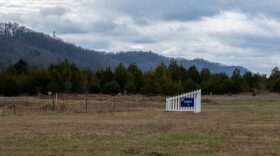Transmission lines carry electricity from power plants to cities across Tennessee.
Transmission lines can also carry electricity across the country — if utilities allow it.
“The grid is the best battery there is,” said Christina Hayes, director of the nonprofit Americans for a Clean Energy Grid.
Sometimes, states have extra power. Sometimes, states have too little power. Transmission systems can even the load by moving power where it is needed.
To do this efficiently, utilities must plan regionally and consider longer transmission connections. Some parts of the country are doing this: Grid operators in the Midwest recently did a study with the Plains to identify upgrades and an interregional transmission project.

The Southeast, on the other hand, is doing the least amount of collaboration, according to a new report by Hayes’ nonprofit.
“A key obstacle to effective planning in the Southeast is lack of transparency and effective stakeholder engagement,” the report authors wrote.
Transmission influences cost and reliability. Utilities with robust wire connections can tap into cheaper power from other parts of the country.
“If you are able to participate in a larger pool of power, you’re able to access the lowest cost,” Hayes said.
Blackouts can be reduced with new transmission
Limited transmission across state lines can also have dire consequences.
Take Winter Storm Elliott in December: Gas systems froze, coal plants failed and the Tennessee Valley Authority lost power. Rolling blackouts followed.
At the same time that TVA shut off power, Oklahoma was turning off about 3 gigawatts of excess wind power — equivalent to more than the capacity of the Cumberland Fossil Plant, TVA’s largest coal plant.
“Other parts of the country had a lot of wind that they could have sent to Tennessee had there been the transmission available,” Hayes said.
Tennessee could also help other regions in times of need with more transmission connections. In 2021, Texas lost power during Winter Storm Uri, and between 250 and 700 people died.
“Sometimes, it’s your neighbor who needs extra power from you, but sometimes, it’s going to be you who needs the extra power from your neighbor,” Hayes said.
TVA does not have any regional or interregional transmission projects at this time.
In 2018, the U.S. Department of Energy withdrew from a plan for a 700-mile transmission line that would have carried wind power from Oklahoma to Tennessee. The project partially failed because TVA did not agree to buy transmitted wind energy.
Transmission needs are changing with climate change
Large-scale transmission projects have problems, especially since no one really wants lines built near their homes. Microgrids and big batteries can help reduce the need for as many transmission lines.
But new transmission lines will be built.
The report outlines a few ways to improve transmission projects, like planning for lines that will simultaneously increase reliability, lower costs and reduce emissions. The authors also suggest that utilities should use “scenario-based planning” to factor in the uncertainty of changing resources, increased electricity loads and extreme weather.
TVA has a powerful transmission system that the utility is constantly upgrading. To make the safest grid possible, the report emphasizes, Tennessee and other states will need to work together.





